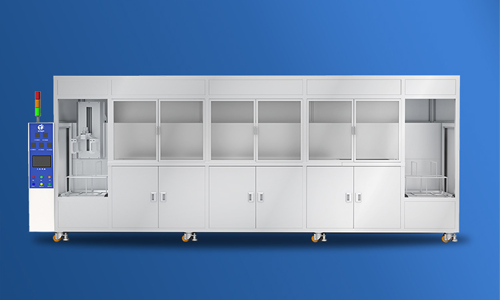The emergence of ultrasonic cleaning equipment replaces conventional cleaning methods. The ultrasonic cleaning machines for various purposes are divided into different ultrasonic frequencies of high, middle and low frequencies to improve cleaning efficiency and cleaning results. Then the cleaning effects between different ultrasonic frequencies of high, middle and low frequencies are also useful. What's the difference?

The cleaning effect of medium and low frequency ultrasonic
Ultrasound is a kind of mechanical wave, which is the propagation of mechanical vibration in the medium. When the ultrasonic wave propagates in the liquid, the liquid particle will vibrate slightly near its equilibrium position after being disturbed by the sound wave. The liquid particle has no macroscopic movement and migration, but its vibration speed and acceleration are very large. For example, ultrasonic waves with a sound intensity of 1.0 W/cm2 and a frequency of 20 kHz propagate in water (not considering its nonlinear effects for the time being). If the displacement amplitude of the liquid particle is 5 μm, the particle must withstand a pressure between plus and minus 1. 68 atm With a repetition frequency of 20,000 times per second for periodic changes, the particle vibration speed is about 0,63m/s, and the vibration acceleration reaches 7.9X10*m/s', which is about 8000 times the acceleration of gravity. Such fierce and fast-changing mechanical movement, on the insoluble solid particles such as dust attached to the solid surface, the strong shearing effect is enough to make the solid particles fall off the surface of the object to be cleaned, so as to achieve the purpose of cleaning.
High frequency ultrasonic cleaning effect
When the ultrasonic frequency increases to a high frequency of several hundred kilohertz, the wavelength is shorter, λ=0.7~1.5mm, the boundary between the dense and sparse areas of the particles in the sound field is blurred, the cavitation phenomenon in the liquid sound field almost disappears, and the ultrasonic energy is expressed as The acceleration energy of the medium particle. For example, in silicon wafer and photolithography cleaning, 950 kHz ultrasonic is used, and the time between the two peaks is only 1.05μs, which is not enough to form cavitation bubbles, but the energy will reach 10 times the acceleration of gravity, which is reflected in mega ultrasonic cleaning. In the liquid particles on the surface of the workpiece fine scrubbing 950,000 times per second. This is enough to quickly diffuse the cleaning liquid between the substrate (workpiece) and the particles (dirt) to hydrate and wet the surface of the work piece. The liquid film acts like a cleavage to make the particles fall off the substrate. At the same time, the liquid film further prevents secondary adsorption of the particles to the substrate, which is very effective for removing sub-micron particles.






